The Thomas Kay Woolen Mill in Salem, Oregon was established in 1889. The mill ceased operation entirely in 1962, primarily due to competition from manmade materials like polyester. Today the mill is a part of the Willamette Heritage Center. The first two floors of the Thomas Kay Woolen Mill building are devoted to telling the story of woolen processing, on its journey from fleece to fabric. Visitors can view machinery used for carding, spinning and weaving wool on the 2nd Floor.



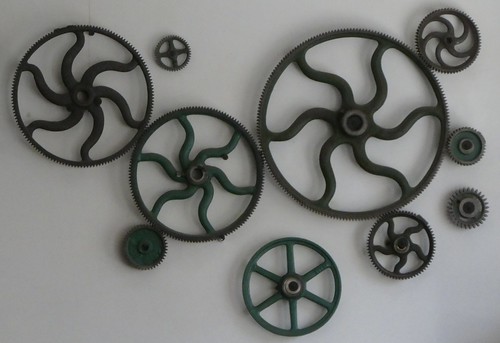
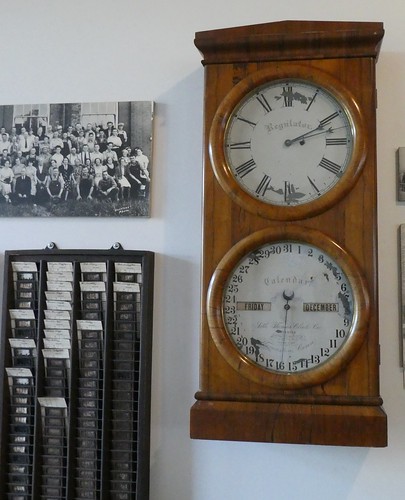
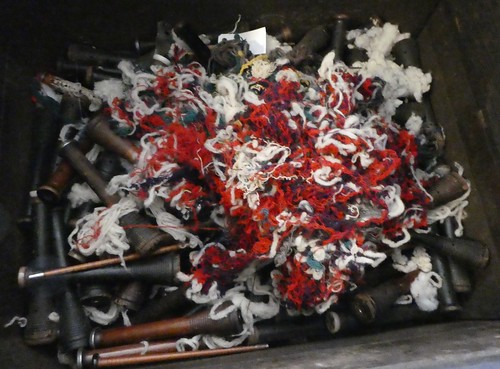
Carding
According to the Heritage Center:
The wire-covered carding rolls comb and untangle wool fibers. The web of wool formed is separated at the end of the process into distinct strips called roving that is ready to be spun.

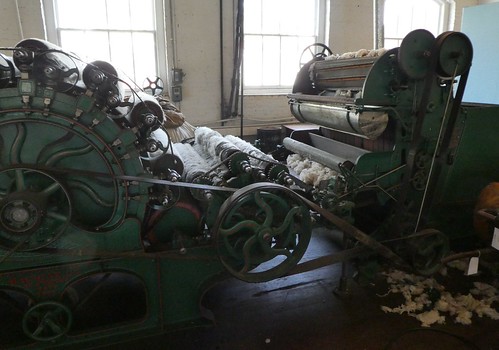



Spinning
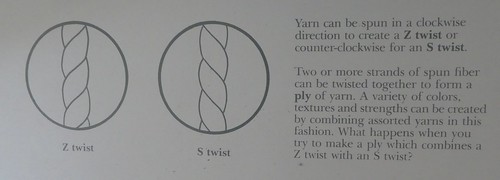
According to the Heritage Center:
The spinning mule twists the roving into yarn as it moves in one direction, and winds onto bobbins on the return. The spinning frame, a later invention, performs the same process in a more compact and efficient manner.


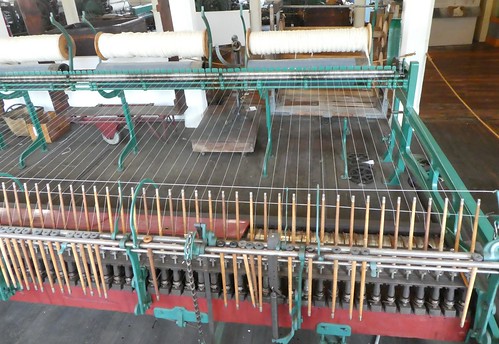
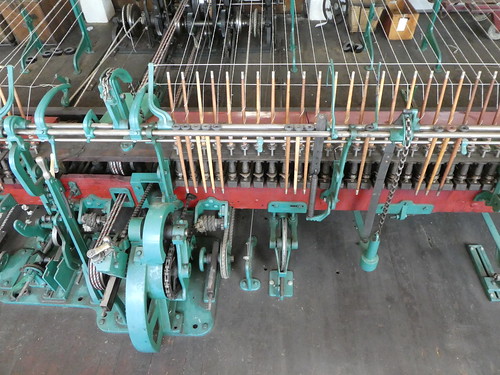
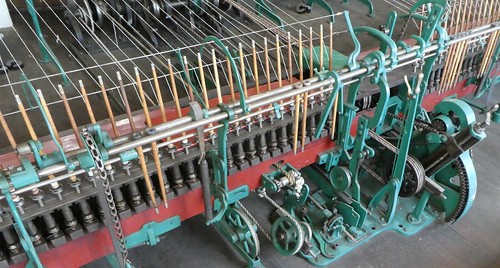

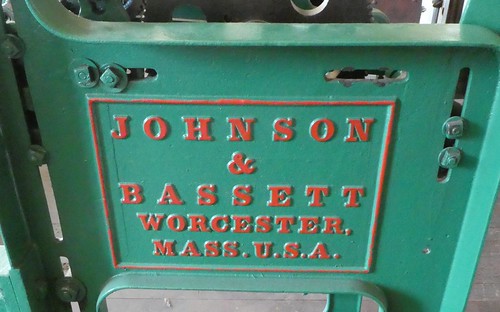

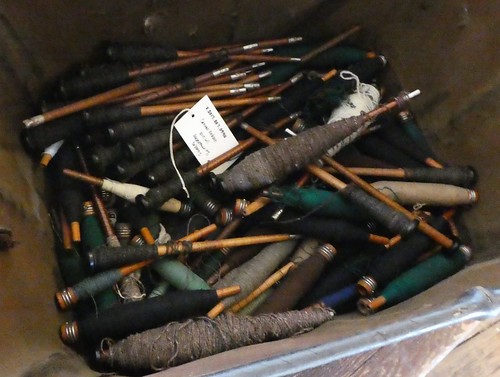

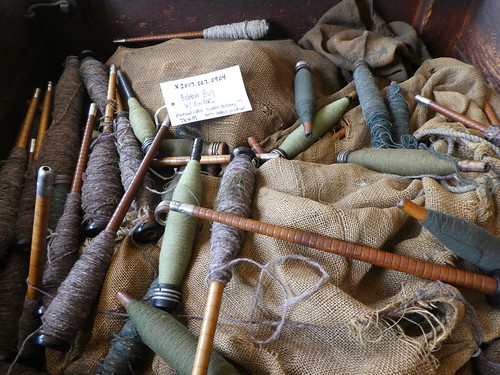
Dressing
According to the Heritage Center:
This process prepares the lengthwise, or warp, threads to be placed in the loom. The threads are wound from individual bobbins onto spools, and then onto the warping reel. From there, they are wound onto the warp beam, are threaded through eyes in the wire heddles, and then through the reed. Finally, the warp beam, the warp, the heddles in their harnesses, and the reed are all placed in the loom for weaving.

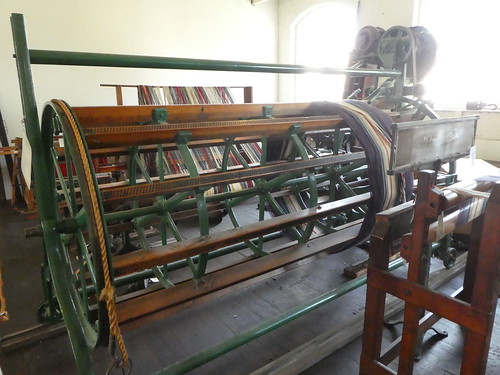
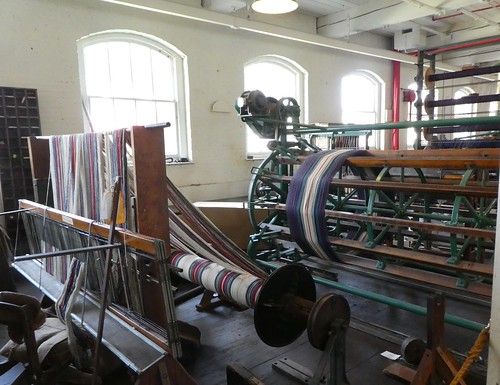
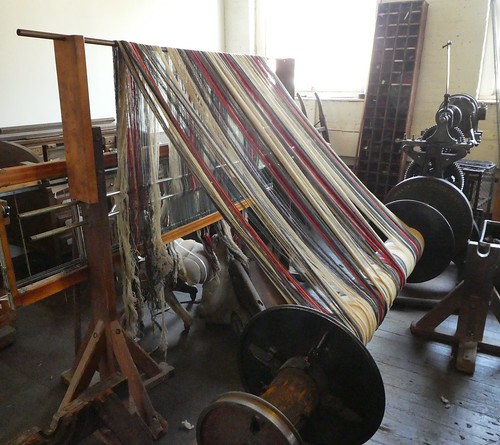

Weaving

According to the Heritage Center:
Weaving is the crossing of warp threads running lengthwise in the loom and weft threads, or filling threads, inserted crosswise. The weft thread is added by a shuttle carrying a bobbin of yarn.

According to the display:
“The weaver was responsible for the successful operation of the loom. If things ran smoothly, they changed filling bobbins on the manual loom and the machine did the rest. More often, there were problems with yarn breakage. The machine would shut down, and the weaver would retie broken ends. For more serious problems, the loom fixer would be called for repairs. Each of these steps cost the weaver, who was paid by the finished piece, precious production time.”

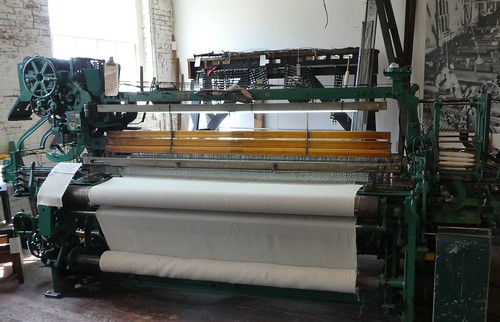



Perching
According to the Heritage Center:
After weaving, the fabric is hung on a “perch” for inspection. Imperfections are marked, then the cloth is cut and dropped through a trap door. It is then weighed, measured, ticketed and passed on to the burlers and menders in the finishing room below.
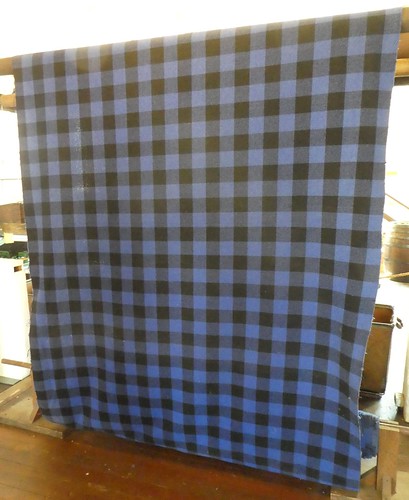
More Oregon museum exhibit photo tours
Willamette Heritage Center: Waterpower runs a woolen mill (photo diary)
Thomas Kay Woolen Mill: Finishing room (photo diary)
Willamette Heritage Center: The Methodist Parsonage (photo diary)
Willamette Heritage Center: The Jason Lee House (photo diary)
Willamette Heritage Center: The Boon House (photo diary)
Museums 101: Clothing (Photo Diary)
Museums 101: Homestead Cabin and Barn (Photo Diary)
Museums 101: Furniture (photo diary)


